Cash
Through a current account
Electronic card (Visa, Master, Dina, etc.)
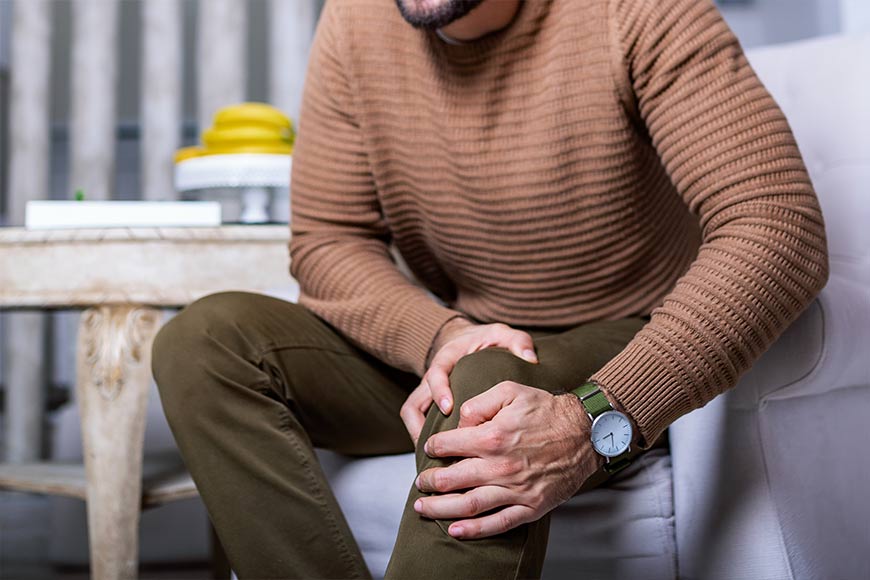
Fokus Fizical 100% guarantees fast and effective healing
Super DISCOUNT! 20% on all therapies in Oktober!
Do not treat yourself over the Internet! Make an appointment via Viber now
The knee is one of the most important, but also the most vulnerable joints in the human body. During everyday activities – walking, squatting, climbing stairs, sitting and standing – the knee endures a lot of stress. Whether it is an athlete, an elderly person, a developing child or someone who does office work, knee pain can occur in anyone, regardless of age and physical fitness.
Knee pain is not a disease, but a symptom that indicates the existence of problems in the joint itself, surrounding structures (muscles, tendons, ligaments, bursae), or systemic disorders (such as rheumatic diseases). The causes can be numerous – from simple biomechanical disorders to serious degenerative and inflammatory processes. Proper diagnostics and an individualized therapeutic approach are key to successfully solving this problem.
Symptoms of knee pain vary depending on the cause, degree of damage and duration of the condition.
Pain can be mild, intermittent, or severe and limiting. Here are the most common symptoms to look out for:
In more severe conditions, joint deformities, more pronounced swelling with fluid accumulation and limitation of mobility may also occur.
The causes of knee pain can be classified into three main groups: injuries, degenerative and inflammatory diseases, and functional and mechanical disorders. There are also numerous risk factors that contribute to the development of the problem.
Injuries and trauma:
Degenerative diseases:
Inflammatory diseases:
Mechanical and functional disorders:
Risk factors:
These injuries are most common in athletes and active people, but can also occur with improper movement or a fall.
Treatment for knee pain depends on the cause, the stage of the condition, and the patient's overall health. The goal of treatment is to relieve pain, reduce inflammation, restore mobility, and prevent further damage.
Conservative treatment (non-surgical)
In most cases, knee pain is successfully treated with physical therapy, without the need for surgery.
Physical therapy includes:
For patients who cannot come to the office, our team provides physical therapy services at home. Treatments are carried out under the supervision of experts, with complete equipment, and include all phases of therapy - from the initial examination, through treatment to monitoring progress.
Drug therapy
In collaboration with a physiatrist or rheumatologist, medications to reduce pain and inflammation (analgesics, nonsteroidal anti-inflammatory drugs, corticosteroids) are introduced as needed.
Surgical approach (if necessary)
In cases of severe meniscus injuries, ligament damage or severe arthrosis, when conservative methods do not yield results, arthroscopy or other orthopedic intervention may be recommended.
Why does my knee hurt?
Knee pain can have a variety of causes, including injuries such as ligament sprains or meniscus damage, degenerative changes such as osteoarthritis, inflammatory processes such as arthritis, or simply overuse due to intense physical activity. The exact cause depends on the location of the pain, its duration, intensity, and accompanying symptoms.
When should I see a doctor for knee pain?
A visit to the doctor should not be postponed if knee pain lasts longer than a few days, if it is accompanied by swelling, redness, a feeling of warmth, if you cannot stand on your leg, bend or straighten it, or if the pain occurred suddenly due to an injury, fall, or twisting of the knee.
How can I relieve knee pain myself?
You can relieve knee pain by avoiding activities that make it worse, resting your leg in an elevated position, applying cold compresses several times a day, using an elastic bandage for stabilization, and taking anti-inflammatory medications such as ibuprofen if necessary, but only with the prior advice of a doctor.
What exercises are good for knee pain?
The most effective exercises for relieving knee pain include gentle stretching of the hamstrings, strengthening of the quadriceps, and activities that do not put a lot of strain on the joints, such as riding an exercise bike or swimming, all of which should be performed in consultation with a physical therapist.
Does knee pain mean I need surgery?
Knee surgery is recommended only in cases where conservative treatment fails or when there is a serious injury, such as a complete ligament tear or severe meniscus damage, while most cases are successfully treated with rest, physical therapy, and exercises.
Cash
Through a current account
Electronic card (Visa, Master, Dina, etc.)
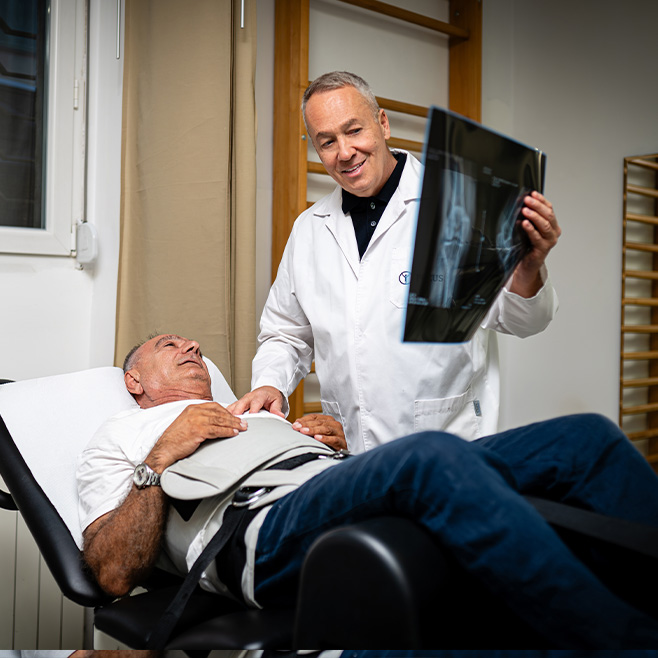
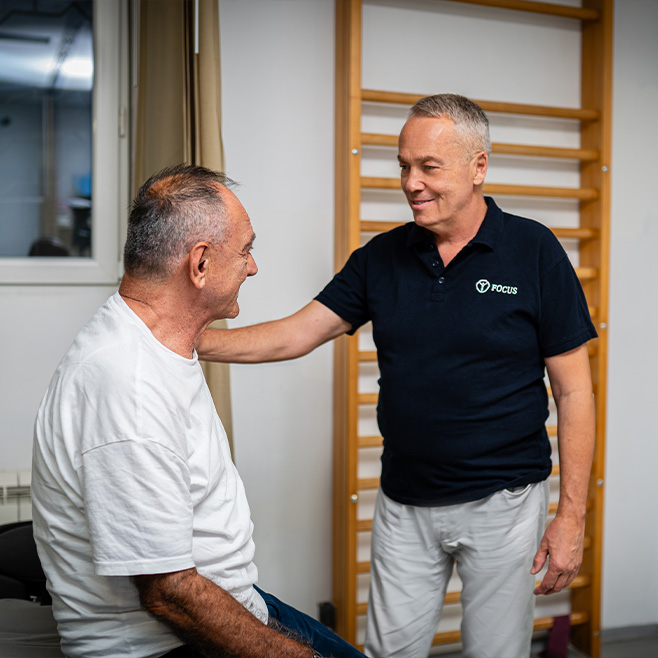
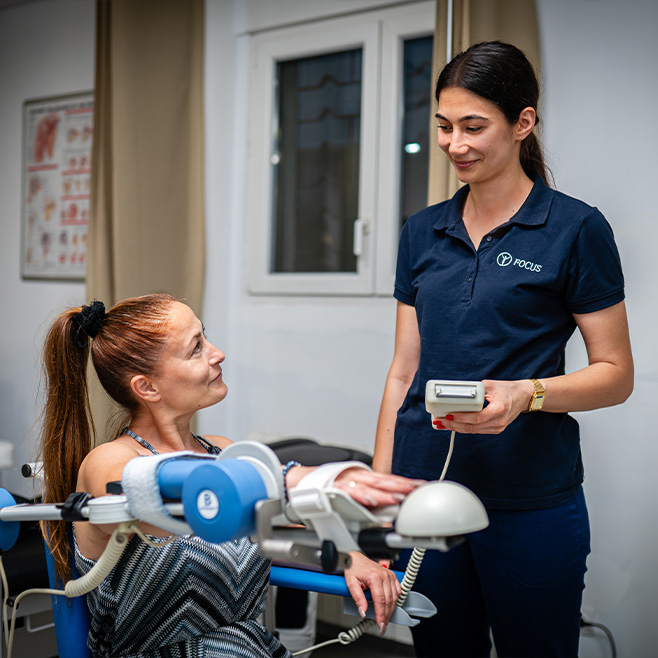
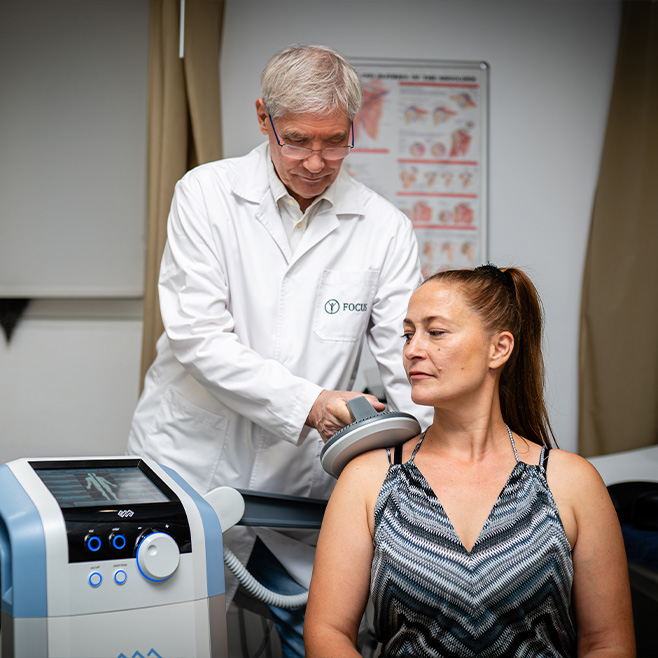
See the experiences of our satisfied patients who successfully recovered with the help of our physical therapy. Get acquainted with the testimonies of patients who faced various joint injuries, sports knee injuries, back injuries and similar problems, which we quickly, efficiently and successfully treated.
Aesthetic surgery
Focus Fizikal is a leading private clinic for physical therapy in Belgrade. For more than 10 years, we have been providing high-quality services that enable quick recovery and healing of our patients.
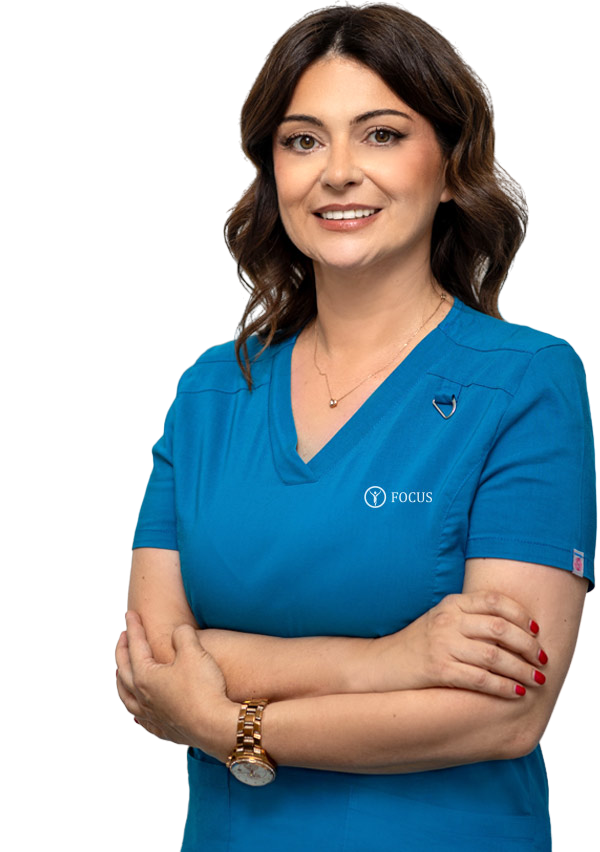
For all our current and future patients, we have made it possible to schedule an appointment online.